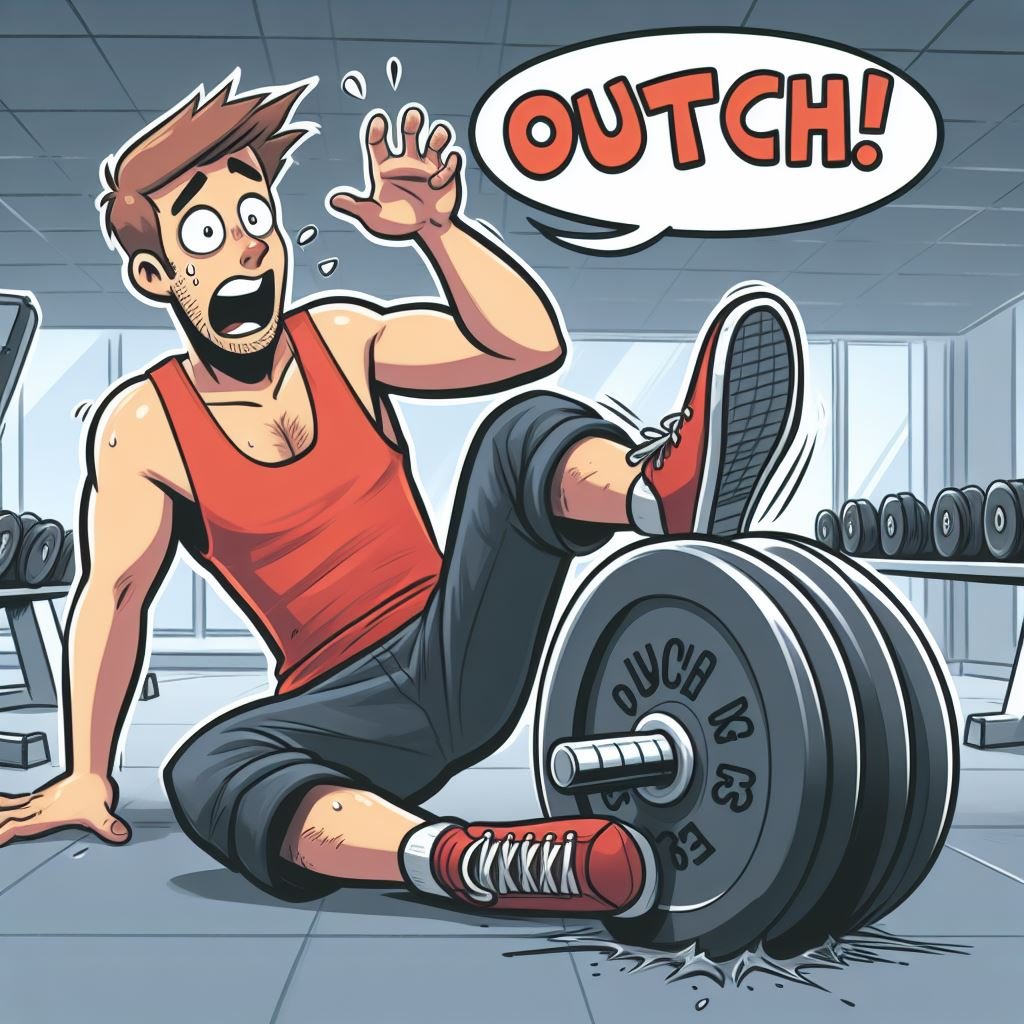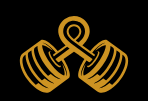COMMON TRAINING MISTAKES

TABLE OF CONTENTS
- Introduction
- Mistake #1: Neglecting Proper Warm-up and Mobility Work
- Mistake #2: Lack of Focus on Technique
- Mistake #3: Overlooking Progressive Overload
- Mistake #4: Not Prioritizing Recovery
- Mistake #5: Relying Too Heavily on Supplements
- Mistake #6: Ignoring Weak Points and Imbalances
- Mistake #7: Neglecting a Proper Nutrition Plan
- Mistake #8: Lack of a Structured Weight Training Schedule/Plan
- Mistake #9: Ignoring Signals from Your Body
- Mistake #10: Overtraining and its Counterproductive Effects
- Conclusion
INTRODUCTION
your journey to increase your 1 Rep Max(1RM) and achieve greater strength demands more than just lifting heavy weights. It requires a comprehensive approach that includes all aspects of training, nutrition, and recovery.
Unfortunately, many weightlifters, novice and advanced fall victim to common mistakes that hinder progress and increase the risk of injury.
The sooner you can identify an issue with your training program and address them, the sooner you can get back on track with your strength gains.
Let’s explore these pitfalls and how to properly address them to maximize your strength gains effectively and safely.
MISTAKE #1:
NEGLECTING PROPER WARM-UP AND MOBILITY WORK
Skipping or rushing through warm-up exercises is a recipe for disaster. A proper warmup routine will improve performance, increase energy, and reduce your chance of injury in the gym.
A warm-up routines should include dynamic stretches, foam rolling, and activation exercises to get the blood flowing to where it’s needed and prepare your body for the main lifts you have scheduled for the workout.
Neglecting this important stretching and mobility work can limit your range of motion, compromising technique and performance. This at best leads to sub optimal workouts that don’t train the targeted muscle groups as intended, and at worst leads to injury which can set your training back weeks or even months.
Make sure to pay special attention to aches or pains that may be lingering from a previous workout. The last thing you want to do is aggravate a minor injury turnignit into a major one.
MISTAKE #2:
LACK OF FOCUS ON TECHNIQUE
Form is the foundation of strength training. Poor technique not only reduces the effectiveness of the exercise toward your target muscle groups. It also increases the risk of injury.
Take the time to learn and master proper lifting techniques for each exercise in your routine. Set down you ego and reduce the weight when needed to ensure your form is where it needs to be.
Check your form periodically by lifting in front of a mirror (Yeah those things you use to discretely check out the other gym goers?… they’re so you can check your form), or having a training partner give you feedback. If you train by yourself in your badass garage gym you can always take a video of yourself so you can review it and see where you can make improvements.
If your unable to complete your scheduled workout for the day with good form due to fatigue or, it may be a sign of another issue with your training such as poor nutrition & recovery, or a training program that’s getting ahead of your bodies ability to grow stronger.
If this is the case take a step back and try to address the underlying issue vs just going thru the motions.
Review the other common mistakes listed here to find out what those issues may be.
MISTAKE #3:
OVERLOOKING PROGRESSIVE OVERLOAD
Progressive overload is essential for strength gains. Continuously challenge your muscles by gradually increasing weight, volume, or intensity.
Without progressive overload, you’ll likely hit a plateau in your strength gains.
A structured training program can help you ensure you have the appropriate amount of progressive overload in your training program while providing the needed recovery time for your body to get stronger.
MISTAKE #4:
NOT PRIORITIZING RECOVERY
A good workout program effectively tears down your muscles so it can be rebuilt stronger. This rebuilding process is why recovery is so important. Without it you can’t get stronger.
Without recovery you won’t be able to keep up with the growing demands of a good training program that incorporates progressive overload strategies.
Adequate rest, sleep, and nutrition are essential for muscle repair and growth. Ignoring recovery can lead to overtraining, fatigue, and injury.
Checkout our Recovery Tips Section for a detailed guide to maximizing your recovery between training sessions, and how to get the most out of recovery days even if you have a busy schedule.
MISTAKE #5:
RELYING TOO HEAVILY ON SUPPLEMENTS
While supplements can complement nutrition from your normal diet, they shouldn’t replace it.
Focus on consuming a balanced diet of real foods rich in protein, carbohydrates, and healthy fats to support your bodies recovery in a complete training plan.
Relying too heavily on supplements leads to imbalanced nutrition at many supplements done’t contain fiber and nutrients found in regular Whole Foods. This can lead to digestive issues, and an imbalance in nutrition as many supplements have high doses of nutrients and minerals not normally found in regular roods
Checkout our Nutrition Tips Section for a detailed guide on optimizing your nutrition for strength gains.
Personally I like to use a good protein supplement to get my day started and maybe after a hard workout if I don’t have much time for a full meal. otherwise I try to get the rest of my nutrition from real food.
MISTAKE #6:
IGNORING WEAK POINTS AND IMBALANCES
This is a very common mistake! Most of us like to do what we are good at. It takes work to work on the things we suck at.
Identify and address weak points and muscle imbalances to prevent injuries will help maximize strength gains. Incorporate targeted exercises and accessory movements to strengthen these areas. Also don’t focus on just the lifts you like like say Bench, make sure to balance you routine with other muscle groups such as back, legs, core, and balance work.
An example is recognizing that stability is an issue on your bench press so you add dumbbell presses and shoulder flies to work on this weak point.
Or if you don’t have the hip flexibility to get low enough on your squat lighten the load up and really get deep to start building the strength where it’s needed most.
Too many lifters shy away from addressing the weak areas in their lifts because lets be honest it’s no fun doing things you suck at. But as you address each weak link you’ll become a more powerful well rounded lifter.
MISTAKE #7:
NEGLECTING A PROPER NUTRITION PLAN
Without good nutrition athletes cannot achieve peak performance.
Your nutrition fuels your workouts and supports muscle growth during recovery. Ensuring your diet includes adequate protein, carbohydrates, and healthy fats will maximize muscle growth.
A common ratio many strength athletes shoot for is to get in calories around 30% in protein, 40% in carbohydrates, and 30% in healthy fats. Keep in mind this is only for macro nutrients, and there are many other components to a healthy diet that includes vitamins, minerals, and fibers.
Consulting with a nutritionist can help you develop a personalized nutrition plan to meet your goals.
This is a big topic but you need to identify your core macros (protein, Carbs, Fats) and how much you need of each to reach your lifting goals. Timing of when you eat these foods is also important such as carbs before a workout for energy, and spacing your protein out throught the day so your body has time to properly absorb and digest it.
Checkout our Nutrition Tips Section for a detailed guide on optimizing your nutrition for strength gains. You’ll be amazed at how much of a difference thismakes.
MISTAKE #8:
LACK OF A STRUCTURED WEIGHT TRAINING SCHEDULE/PLAN
Many lifters just go to the gym and do whatever feels good on that day. But for real gains you need a better plan, preferably one that incorporates a well implemented progressive overload strategy.
A structured lifting plan provides 2 key components for success.
1 CONSISTENCY
Consistency is a huge key in strength training. Haveing a structured workout plan that includes a variety of exercises targeting different muscle groups through out the training schedule will ensure you’re getting to the gym frequently enough, targeting the correct muscle groups, while providing adequate recovery while not neglecting any important areas of your body.
2 PROGRESSIVE OVERLOAD
you’re probably noticing a trend by this point in this list. incorporating progressive overload is one of the most important aspects of achieving massive strength gains. By systematically increasing loads, volumes, and intensity incrementally over time you spurs growth, while giving your body a chance to grow stronger. A well thought out structured training program can help find the balance between increasing difficulty and preventing injury.
MISTAKE #9:
IGNORING SIGNALS FROM YOUR BODY
If you ask any pro athlete what their secret to top tier performance is. A common answer you’ll hear is listen to your body’s cues. Persistent aches, pains, or fatigue are signs that you need to modify your workouts or prioritize rest and recovery.
Ignoring these signals can hinder progress, lead to injuries, and sets you back from your goals.
If your nutrition is on point, and you’re getting good sleep but feel consistently tired or worn out, it may be time for a deload week. Over time the accumulated stress of a solid workout plan takes a toll on your body. A reload week can provide the time to fully recover.
MISTAKE #10:
OVERTRAINING AND ITS COUNTERPRODUCTIVE EFFECTS
Over training is somewhat common in sprinters, jumpers, and weight lifters.
Pushing yourself too hard without adequate rest, or insuffent nutrition can lead to overtraining. As we discussed earlier workouts tear your muscles down so your body can rebuild them stronger. But you must give your body the time to rebuild.
Don’t confuse the “No Pain, No Gain” mentality with always needing to go 110%. While pushing hard on those heavy sets is an important part of triggering muscle growth your body can’t keep up with a never ending grind.
Balance intense training with sufficient rest and recovery to prevent decreased performance and increased injury risk.
Despite your desire to be a machine that rivals the terminator sent back in time the fact is you are human. The body can do amazing things if you give it the time to fully recover.
CONCLUSION
Achieving greater strength and increasing your one-rep max requires a holistic approach to training. By avoiding these common mistakes and focusing on proper warm-up, technique, progressive overload, recovery, balanced nutrition, addressing weak points, listening to your body, and avoiding overtraining, you can maximize your strength gains effectively and safely.
Remember, patience and consistency are key. Stay committed to your training journey, and celebrate each milestone along the way.

